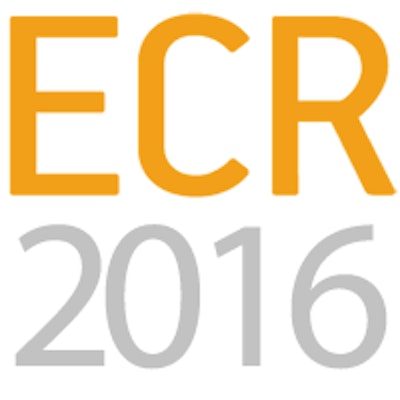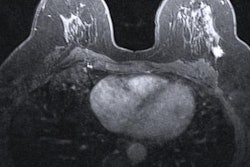
VIENNA - An abbreviated breast MRI protocol, approximately 4 minutes, has comparable diagnostic performance with the full-breast MRI protocol and could be considered useful for dense-breast analysis in high-risk patients, according to a presentation at ECR 2016.
Breast MRI still remains a second-line imaging method, according to Dr. Mirjan Nadrljanski from the diagnostic imaging department at the Institute of Oncology and Radiology of Serbia in Belgrade, Russia.
 Dr. Mirjan Nadrljanski.
Dr. Mirjan Nadrljanski."It is true that it shifts the stage distribution of breast cancer to those lower stages," he said. "And it does reduce a fraction of internal cancers." However, there are high costs and indirect costs, including being time-consuming.
"On the other side, mammography is still an imperfect screening test, and the question of mammography in an extremely dense breast tissue has already been raised. If we may ask ourselves certain questions: Do we need all sequences for all patients in routine work? Could we modify the protocols according to the indications? With the modified protocols could we introduce more appropriate indications?"
Previous research showed an abbreviated protocol for breast cancer screening may have identical sensitivity and specificity to the full diagnostic protocol. Nadrljanski and colleagues prospectively assessed the diagnostic performance of the abbreviated breast MRI protocol for cancer detection in high-risk patients with mammographically dense breasts and no palpable lesions. They found the abbreviated protocol is indeed comparable to the full protocol.
After a negative clinical breast examination and inconclusive mammography in patients with dense breasts, breast MRI was performed in 100 consecutive high-risk patients. The abbreviated breast MRI protocol consisted of T1-weighted imaging, T1-weighted imaging with contrast, subtraction (i.e., whatever changed after contrast injection), and maximum intensity projection (MIP). The full protocol included the abbreviated protocol plus short-tau inversion recovery (STIR), T2-weighted imaging, fast low-angle shot (FLASH), and diffusion-weighted imaging (DWI), and took more than 25 minutes.
The sensitivity and negative predictive value (NPV) with the abbreviated breast MRI protocol in identifying malignant lesions were 100%, with a high specificity of 97.78%. All 10 malignant lesions were identified -- invasive and in situ. Four out of four invasive malignant lesions with a diameter 1 cm or smaller were identified.
The sensitivity of the full-length protocol was 100% with all malignant lesions identified -- invasive and in situ -- with a comparable specificity of 96.67% and NPV of 100%.
Therefore, the abbreviated breast protocol demonstrated accurate cancer detection but has shorter acquisition time and may have a role in dense-breast analysis in high-risk patients.
However, further research must be done, but it must be very specific, Nadrljanski said.
"Instead of just saying further research needs to be done, I would like to point out that well-designed, multicenter trials are needed followed by either a systematic or a meta-analysis in order to fully support an indication, which tends to become evident," he concluded.
Be sure to view our ECR 2016 interview with Dr. Christiane Kuhl from the University of Aachen in Germany. She explains why she remains a passionate supporter of breast MRI and also describes a novel, abbreviated technique that promises to make it more viable and cost-effective.


.fFmgij6Hin.png?auto=compress%2Cformat&fit=crop&h=100&q=70&w=100)





.fFmgij6Hin.png?auto=compress%2Cformat&fit=crop&h=167&q=70&w=250)











